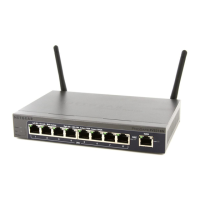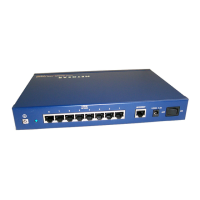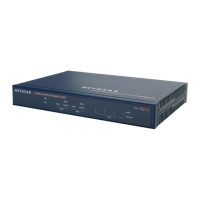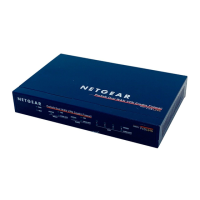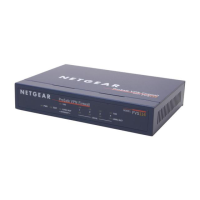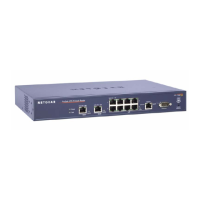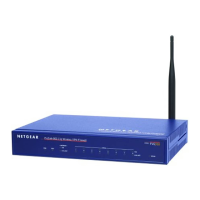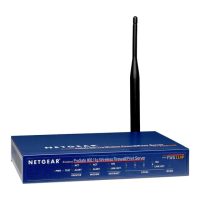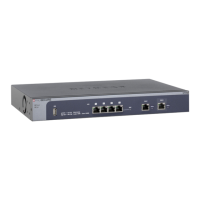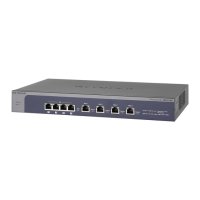Virtual Private Networking Using IPSec and L2TP Connections
266
NETGEAR ProSAFE VPN Firewall FVS318G v2
The IKE policy settings that are described in the following table are specifically for a Mode
Config configuration. Table 51 on page 243
explains the general IKE policy settings.
Table 57. Add IKE Policy screen settings for a Mode Config configuration
Setting Description
Mode Config Record
Do you want to use
Mode
Config Record?
Select the Yes radio button.
Note: Because Mode Config functions only in Aggressive mode, selecting the Yes
radio button sets the tunnel exchange mode to Aggressive mode. Mode Config also
requires that both the local and remote endpoints are defined by their FQDNs.
Select Mode
Config Record
From the list, select the Mode Config record that you created
in Step 5 on page 264.
General
Policy Name A descriptive
n
ame of the IKE policy for identification and management purposes.
This example uses ModeConfigNA_Sales.
Note: The name is not supplied to the remote VPN endpoint.
Direction / Type Responder is automatically selected when you select the Mode Config record in
the Mode Config Record section. This ensures that the VPN firewall responds to an
IKE request from the remote endpoint but does not initiate one.
Exchange Mode Aggressive mode is automatically selected when you select the Mode Config
record in the Mode Config Record section.
Local
Identifier Type From the list, select FQ
DN.
Note: Mode Config requires that the VPN firewall (that is, the local endpoint) is
defined by an FQDN.
Identifier Enter an FQDN for the VPN firewall.
Remote
Identifier Type From the list, select FQDN.
Note: Mod
e Config requires that the remote endpoint is defined by an FQDN.
Identifier Enter the FQDN for the remote endpoint. This must be an
FQDN that is not used in any other IKE policy.
IKE SA Parameters
Note: Genera
lly, the default settings work well for a Mode Config configuration.
Encryption Algorithm To negotiate the security association (SA), from the list, select the 3DES algorithm.
Authentication
Algorithm
From the list, select the SHA-1 algorithm to be used in the VPN header for the
authentication process.

